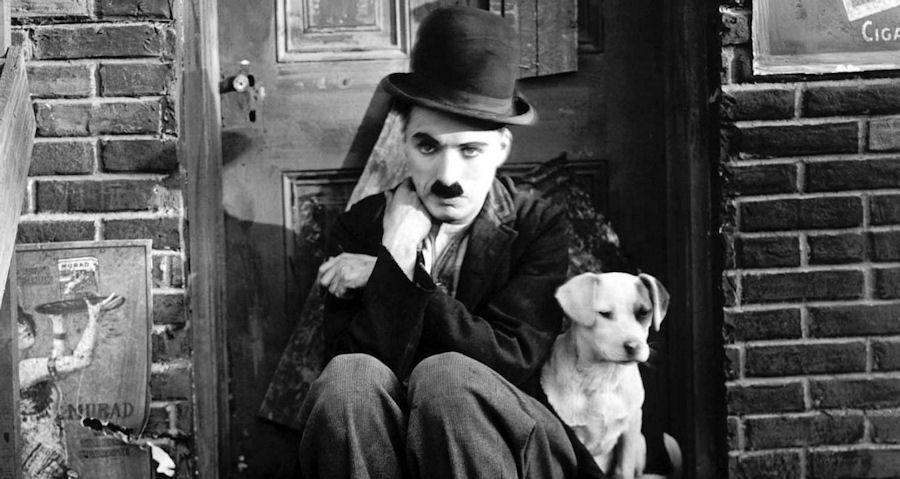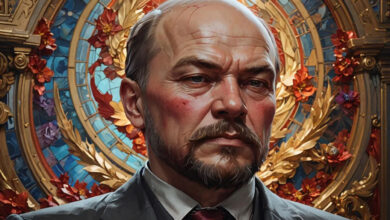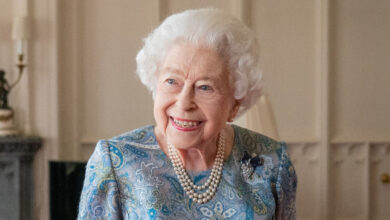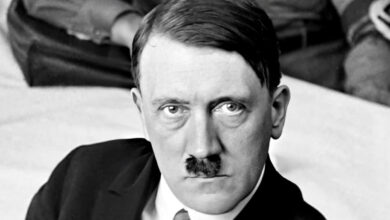
“Failure is unimportant. It takes courage to make a fool of yourself” – Charlie Chaplin.
Podcast: Play in new window | Download
Subscribe: Spotify | Amazon Music | Youtube Music | RSS
Charlie Chaplin Biography
Sir Charles Spencer Chaplin, known to the world as Charlie, was born on 16 April 1889 to music hall entertainers Charles Chaplin Sr, a singer and son of a butcher and Hannah Harriet Pedlingham Hill, who had a brief career under the stage name Lily Harley. By 1891, the couple had split and although they never divorced, Hannah gave birth to another child, a son called George Wheeler Dryden, who was fathered by another music hall entertainer called Leo Dryden, who took the boy away when he was six months old. It would be 30 years before George and Charlie crossed paths again. Chaplin also had another brother called Sydney John Hill who was illegitimate when he was born but had come under the legal care of Charles Sr, when he married Charlie’s mother Hannah.
It is unclear where Charlie was born, although he always believed it to be on East Street, in Walworth, London. Wherever it was, he and his brother Sydney, spent their early years with their mother in a district of London called Kennington. They had very little income and spent those years in poverty and so when he was seven years old, Charlie found himself in the care of the Lambeth Workhouse. The council found him some schooling at the Central London District School for paupers and although he was reunited with his mother in July 1898, he was soon back in the workhouse and sent to a similar school called Norwood.
Later that year Hannah was committed to a mental asylum called Cane Hill suffering from psychosis which was probably brought on due to a syphilis infection. During this time the boys were sent to stay with their father who was by now an alcoholic and scarcely able to look after them. In 1900 Charles Senior died. It seemed that Hannah was on the road to recovery but in 1903 she had to re-enter Cane Hill. Charlie was fourteen years old at this point and ended up living rough on the streets of London until his brother Sydney came back from the navy in which he had enrolled two years earlier. Hannah came out of care again a few months later but by March 1905 her illness had returned and this time when she went into care she stayed there for thirteen years until her death in 1928.
All through the period of trying to care for his mother and attending poor schools, Charlie had, with encouragement from his mother, started to perform on stage. He started with dancing but his interest lay in forming a comedy act. Just after his mother’s relapse in 1903, Charlie registered with an agency in the West End of London and he soon landed a role as a newsboy in a theatre production called Jim, A Romance of Cockayne. The show was unsuccessful and only lasted a couple of weeks but Charlie’s performance had been singled out for praise by the critics.
The show’s playwright Harry Arthur Saintsbury managed to secure another role for Charlie, this time as a pageboy in a production of Sherlock Holmes which went on three nationwide tours. Charlie’s popularity led to him playing the part in London alongside William Gillette who was the original Holmes. He left the show in 1906 after two and a half years playing the part.
Charlie polished his skills over the next couple of years as a comedic actor and went on tour with his brother who was also trying to become an actor. Although accomplished by the time he was 18 years old, he struggled to find work and an attempt at a solo career failed.
Sydney, however, had landed on his feet when he joined Fred Karno’s comedy company and had become, by 1908, one of their key performers. He managed to get Charlie a two-week trial. He immediately made an impact and after his first night at the London Coliseum, he was offered a contract. Charlie worked his way up from minor roles until by 1909 he was the star attraction and Karno selected him for a tour of the vaudeville circuit in America which lasted for almost two years. He was back in London by June 1912 but couldn’t wait for the next tour to begin six months later.
Six months into the second tour, Charlie met with a representative from the New York Motion Picture Company who had seen his performances and offered him the chance to join Keystone Studios. Although Charlie wasn’t really impressed with the Keystone films, it was a chance to get into the movie industry. He also considered it an opportunity at a new life and so he signed a contract for $150 per week in September 1913. By December 1913, Chaplin was in Los Angeles where he met his new boss, Mack Sennett.
Over the next few weeks, Charlie tried to learn all he could about making films and his acting debut came along in the ‘one-reeler’ Making a Living which was released in February 1914. Chaplin didn’t like this first film, but for the second one, Mabel’s Strange Predicament, he got to pick his own costume and he chose one which became almost a trademark for him – the tramp. The character was so successful that it led to a string of films and after the eleventh, called Mabel at the Wheel, Chaplin was given to opportunity to direct.
Chaplin made is debut as director for the May 1914 release of Caught in the Rain and it was a huge success. After this, Chaplin directed almost every short film in which he appeared. His films became hugely popular and he started to develop a significant fanbase and so when his contract came up for renewal at the end of the year, Charlie asked for $1000 per week. Sennett refused though as he thought that Chaplin was asking for too much.
Charlie knew that he was worth the money though and so when an offer came in from the Essanay Film Manufacturing Company who were based in Chicago, for $1250 per week with a $10,000 sign-on bonus he jumped ship to join them in December 1914. At Essanay, Chaplin put more thought into his films and instead of turning out a film every week, he would take a month or more between releases. The character of the tramp evolved as well, becoming more romantic and gentle. He also gathered around him a team of regular players and also recruited a leading lady called Edna Purviance whom he developed a romantic relationship with. It was while at Essanay that the film The Tramp was released in 1915 and for the first time a sad ending to such a film was created when The Bank was released. His film innovations were starting to get him noticed by the more serious critics and by the end of 1915, Chaplin had become somewhat of a cultural phenomenon. Chaplin merchandise started to appear and he was featured in songs, comic strips and cartoons. Chaplin also realised that he had become an international star and so when his contract with Essanay came to an end a number of offers came in from studios which included Universal, Fox and Vitagraph. The best of these was from the Mutual Film Corporation which offered him $10,000 per week. He eventually negotiated a $670,000 per year contract making him one of the highest-paid people in the world, and he was still on 26 years old.
A number of iconic films came out of Chaplin’s new studio in Los Angeles including elaborately produced two-reelers such as The Floorwalker, The Vagabond and The Count. It was at this time that Chaplin recruited Henry Bergman whom he would go on to work with for over thirty years. His contract at Mutual required him to release a film every four weeks, which he had managed to achieve, but going into his second year he demanded more time per film and so from January to October 1917 he made only four films, Easy Street, The Cure, The Immigrant and The Adventurer. The attention he paid to these films has led modern Chaplin scholars to declare them to be some of his finest work.
When his contract with Mutual ended, Chaplin along with his now business manager brother Sydney, negotiated a contract with the First National Exhibitor’s Circuit for the production of eight films in return for $1m which included Shoulder Arms which saw The Tramp in the trenches during World War 1. The film took four months to complete even though the finished product was only 45 minutes long. Even though the film was a resounding success, when Chaplin asked for more money, the studio refused. This and the worry about a possible merger with Famous-Players Lasky led Chaplin, and colleagues Douglas Fairbanks, Mary Pickford and D. W. Griffiths to form a new distribution company. Formed in January 1919 United Artists as it was called revolutionised the film industry allowing the four partners to have complete control over the films they wanted to make.
Prior to the formation of United Artists, Chaplin got married in September 1918 to seventeen-year-old actress Mildred Harris who had revealed to him that she was pregnant with his child. The pregnancy turned out to be a false alarm but soon became pregnant for real, giving birth to a son called Norman Spencer Chaplin on 7 July 1919. Unfortunately, though, the child died only three days later. The union between Charlie and Mildred was not a happy one and it ended in April 1920.
Losing a child had an effect on Chaplin though and it is thought that it and his own childhood experiences heavily influenced The Kid which was released January 1921. Dealing with issues such as poverty and child-parent separation it met with instant success and by 1924 had been seen in over 50 countries.
After The Kid and another two-reeler called The Idle Class, Chaplin concentrated on completing the films he was contracted to produce for First National. Pay Day was released in 1922 and his final short film, The Pilgrim was released in 1923.
Now out of his contract with First National, he was free to do what he liked and in 1922 he began filming A Woman of Paris, a romantic drama in which he only had a brief cameo role. The film was critically acclaimed but the public was not so enthused as it seemed there was no interest in a Charlie Chaplin film that didn’t feature him as its star. Chaplin withdrew the film as soon as he could, disappointed in its failure.
His next project was not a failure though. He returned to comedy with The Gold Rush. Shooting on location in the Truckee mountains and using over 600 extras, the film featured the Tramp as a lone prospector looking for love as well as gold. The film took over 15 months to complete and cost over $1m to produce. It was a box office smash and made a $5m profit.
During the production of The Gold Rush, Chaplin married again in what must have seemed like a déjà vu moment as his new love interest, a teenage actress called Lita Grey announced she was pregnant. She was sixteen, he was thirty-five and under California law, Chaplin could have been charged with statutory rape and so the marriage was a hush-hush affair which took place in Mexico on 25 November 1924. On 5 May 1925 Charles Spencer Chaplin Jr was born and Sydney Earl Chaplin came along on 30 March the following year. Again, though, the marriage was not a happy one and in November 1926, Lita took the children and left. The divorce was not a pleasant experience for Chaplin as Lita’s accusations of infidelity, abuse and “perverted sexual desires” were leaked to the press and Chaplin suffered a nervous breakdown. A settlement of $600,000 was reached, the highest of its type at the time. Whilst Chaplin dealt with the divorce, production of his latest film, The Circus was halted for ten months. It was completed in October 1927 and finally released in January 1928. Chaplin was awarded a special trophy related to his production of The Circus at the first academy awards, but it would forever remind him of a bitter period in his life.
His next film would fly in the face of the latest Hollywood craze. All the studios were in the process of changing over to ‘talkies’, but Chaplin resisted the idea, instead, pressing ahead with City Lights as a silent film, although it did have a musical score, which Chaplin composed himself. The film took 21 months to complete and by the time it was released in January 1931, silent films were a thing of the past. Nevertheless, it made over $3m at the box office and was critically acclaimed with some people stating that it was his best work to date. Chaplin himself said that it was his favourite film.
After City Lights, Chaplin didn’t know what to do next. He was still convinced that sound would not work in his films, but also to make another silent film would see him wallowing in the past. He decided to go on holiday and spent the next 15 months travelling, but when he returned to Los Angeles, he still didn’t have a plan. He was also lonely and briefly considered retiring, that is, until he met a 21-year-old actress called Paulette Goddard, with whom he started a relationship.
He still wasn’t ready to launch another film project though and turned to writing a series of articles which were published in Woman’s Home Companion detailing his travels overseas. During those travels, Chaplin started to take an interest in world affairs, taking the view that capitalism and increasing levels of machinery would lead to higher unemployment in America. These thoughts led to the development of his next film project.
The film was about how the Tramp and Paulette Goddard faced the great depression. Modern Times was supposed to be a talkie but during its production, Chaplin changed his mind and so there is very little dialogue in the film which took over ten months to make. It does, however, feature the voice of the Tramp as in the film he sings a gibberish song and it is the only time that the Tramp’s voice is heard on film. Modern Times was released in February 1936 to mixed reviews. It made money, but not as much as his previous film, which, it is thought, was down to its political subject matter.
After the release of Modern Times, Chaplin and Goddard went on a trip to the far east, during which the pair were married. She starred as his leading lady in The Great Dictator, but the couple drifted apart, eventually divorcing in Mexico in 1942.
The Great Dictator, Chaplin’s next film was to get into world politics in an even deeper and more direct way, as it took advantage of the similarities noted by others between Chaplin and Adolf Hitler, and directly satirised the Nazi leader. In the film, Chaplin played both the major parts, one of which was a Jewish barber who looked very much like the Tramp and the other being Adenoid Hynkel, a parody of Hitler.
Chaplin was warned that a comedy about Hitler was highly controversial, but as Chaplin had the independent means, he pressed ahead, eventually releasing the film in October 1940. The film was hugely popular, was one of the biggest money-makers of the era and received five Academy Award nominations, but it also signalled the start of the decline in Chaplin’s popularity. It is thought that this is mainly due to the film’s ending in which Chaplin drops the Jewish barber character and pleads for five minutes against war and fascism directly into the camera. From this point forward it is thought that the film-going public would never again be able to separate Chaplin’s films from his political views.
Chaplin’s political views started to bring him to the attention of others as well, most notably J. Edgar Hoover, the Director of the FBI who took to opportunity to try and discredit Chaplin and launch a smear campaign against the star when an actress called Joan Barry with whom Chaplin had an affair launched a paternity suit against him. He was also publicly accused of being a communist. The FBI named Chaplin in four indictments, not least of which was a violation of the Mann Act, which prohibited women from being transported across state lines for sexual purposes. If found guilty, Chaplin could receive up to 23 years in jail. Chaplin was acquitted only two weeks into the trial which began in March 1944, but his reputation had been seriously damaged. He didn’t help himself when only two weeks after the paternity suit had been filed against him, he married again, this time to his latest protegee, the 18-year-old actress, Oona O’Neill. This marriage would be different though as they remained together from February 1945 until Chaplin’s death in 1977. The union also produced eight children.
It took a while before Charlie Chaplin could recover enough from the ordeal of the Mann Act trial to start working again. In 1946 he started filming a black comedy called Monsieur Verdoux. He couldn’t keep politics out of the film though, arguing against capitalism and the development of weapons of mass destruction. It met with controversy when it was released in April 1947 and Chaplin was even booed at the premiere. The FBI also came after him again, launching an official investigation of Chaplin’s political activities in 1947 and calls were made for him to be deported.
Chaplin’s next film was Limelight, which was less about politics and more about his own life. It featured a number of members of his own family as cast members including five of his children. The filming of Limelight began in November 1951 and also represents the only time that Chaplin worked with Buster Keaton who had a cameo appearance in the film. The World premiere of Limelight was in London and Chaplin left America from New York aboard the RMS Queen Elizabeth on 18 September 1952. The following day, his re-entry permit was revoked by the attorney general. When he received the news, Chaplin decided to cut his ties with the United States and did not attempt to return. He sent his wife to settle his affairs there and the couple made their new permanent home in a 35-acre estate called Manoir de Ban which overlooks Lake Geneva in Switzerland.
His next film continued in a political vein and included many of his more recent experiences in America as subjects. A King in New York was released in September 1957 and received mixed reviews. Chaplin refused to release it in the USA and so it also generated limited revenue. It would not be shown in America until 1973.
In 1959 Chaplin released The Chaplin Revue which included re-scored and re-edited versions of some of his old films including A Dog’s Life, The Pilgrim and Shoulder Arms. In 1964 he released his memoirs, a 500-page book which became a best-seller.
His next film would also turn out to be his last. Called A Countess from Hong Kong, it was a romantic comedy set aboard a cruise liner and starred Marlon Brando and Sophia Loren. Chaplin concentrated on directing the film but did have a small cameo appearance. The film was unfortunately though a critical and box office failure and Chaplin was said to be deeply hurt by the negativity surrounding the film.
In the late 1960’s Chaplin’s health began to decline and he suffered a series of minor strokes. He had started to write a new film called The Freak, but it never came to fruition with Chaplin concentrating instead on re-releasing several more of his old films including The Kid and The Circus in the early 1970’s. In 1971 he was made a Commander of the Order of the Legion of Honour at the Cannes Film Festival and he received a special award at the Venice Film Festival in 1972. Also in 1972, he was offered an honorary award by the Academy of Motion Picture Arts and Sciences. Although hesitant to accept the award, he nevertheless made a trip to the USA, his first in twenty years to receive it and received the longest standing ovation in the Academy’s history. In 1975 he was knighted by Queen Elizabeth II but he was too weak to kneel to receive it and had to do so from his wheelchair.
He had suffered several more strokes during the 1970’s which had led to him being in the wheelchair and his health continued to decline. On Christmas Day 1977 Charlie Chaplin died at home in his sleep. He was 88 years old. He was interred at the Corsier-sur-Vevey cemetery.
On 1 March 1978, Charlie Chaplin’s coffin was dug up and stolen by a couple of immigrants who attempted to extort money from Oona Chaplin. Their attempt failed and the pair were caught by police. The coffin was returned to the Corsier cemetery where it was surrounded by reinforced concrete.
Podcast: Play in new window | Download
Subscribe: Spotify | Amazon Music | Youtube Music | RSS




